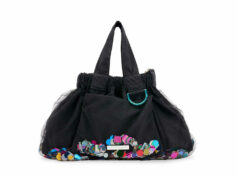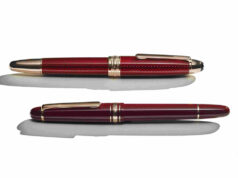GrabFood launched with Crave City
 WHILE GrabFood, transport services app Grab’s food delivery system, has been operational for quite a while now — it has been in place since June in select cities, expanded operations in July to cover all of Metro Manila, and in October began beta testing in Cebu and Mandaue — it was launched officially on Nov. 10 in an event called Crave City. Crave City is open to the public until Nov. 10, with customers able to order food via the app (provided onsite) from establishments Mom & Tina’s, El Chupacabra, Señor Pollo, Bawai’s Vietnamese Kitchen, Charlie’s Grind and Grill, Gong Cha, Ersao, Aysee, Sunrise Buckets, Manila Creamery, and Stockpile, which have stalls in BGC’s Globe Amphitheatre.
WHILE GrabFood, transport services app Grab’s food delivery system, has been operational for quite a while now — it has been in place since June in select cities, expanded operations in July to cover all of Metro Manila, and in October began beta testing in Cebu and Mandaue — it was launched officially on Nov. 10 in an event called Crave City. Crave City is open to the public until Nov. 10, with customers able to order food via the app (provided onsite) from establishments Mom & Tina’s, El Chupacabra, Señor Pollo, Bawai’s Vietnamese Kitchen, Charlie’s Grind and Grill, Gong Cha, Ersao, Aysee, Sunrise Buckets, Manila Creamery, and Stockpile, which have stalls in BGC’s Globe Amphitheatre.
“Grab is no longer just a transportation technology platform,” said Demi Yu, Regional Head for Philippines, Thailand, and Malaysia for GrabFood in a speech. “We’ve now evolved to become an everyday app for consumers in Southeast Asia.”
In six months, GrabFood, first launched in Indonesia, has spread to Thailand, Singapore, Vietnam, Malaysia, and the Philippines. According to Ms. Yu, the app — including its transport services — serves one in six Southeast Asians.
As for GrabFood in the Philippines, the app currently has 4,000 merchants in its platform (multiple branches of restaurants included). The system works by opening the Grab app and asking a rider to order food for you and have the food delivered to your doorstep, with a fee included in the bill. The system is only available until about 9 p.m., said Brian P. Cu, Grab Philippines country head, because “Right now, we’re still working under the hours of the restaurants. But as we add more riders and add more establishments which have extended hours, we [can] also extend the time.” Payment is still on a cash basis, but he said they are working on introducing GrabPay (cashless transactions on the app) as well as other cashless options.
While the Land Transportation Franchising and Regulatory Board, the regulatory body for transport network companies (TNCs) like Grab, has set a 65,000 cap for vehicles allowed to move around Metro Manila., according to Mr. Cu, this does not affect the status of GrabFood. “Right now, we don’t have a cap on [motorcycle] riders. The cap’s on four wheels. We’re adding more riders everyday.”
Mr. Cu said, “Because we are a bit behind on our transport due to the government regulations, then it’s up to us to find other avenues of growth. GrabFood’s one of them.”
Several other Grab services are available in other markets, which have not yet been rolled out in the Philippines including GrabFamily (cars with child-safe car seats) and GrabFresh (a system for grocery shopping). “It would take a bit of time for us to roll that out here as we have to still be able to manage the supply that we have,” said Mr. Cu.
While it serves as a boon for consumers, GrabFood also provides an avenue for entrepreneurs. During the launch of GrabFood, they awarded their top 10 restaurant partners, which included Gong Cha, Frankie’s, Wing Vibe, 24 Chicken, Uncle Moe’s, Mister Kebab, Rufo’s, Hot Star, Empanada Nation, and Yoshinoya. While most of these have brick and mortar stores, some of them, only have facilities for delivery. “What we enable entrepreneurs to do is to bring their top dishes out into the market without having to run a restaurant,” said Mr. Cu. — Joseph L. Garcia



